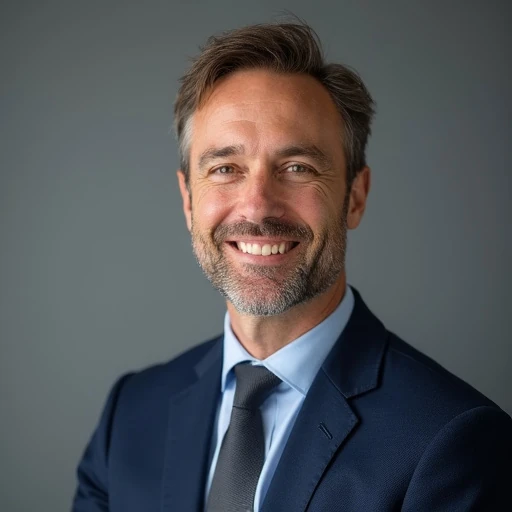The institutional investment landscape is undergoing significant shifts, marked by key leadership changes at major firms like Blackstone, evolving strategies at large pension funds, and a growing debate over new asset classes. Recent developments include a major promotion within Blackstone's real estate division, a stark warning from an SEC commissioner about private market risks, and divergent approaches to cryptocurrency adoption among large asset managers and pension funds.
These events highlight a dynamic environment where traditional investment vehicles are being re-evaluated alongside emerging opportunities and regulatory scrutiny. From real estate to digital assets, the decisions made by these financial giants have far-reaching implications for the broader economy and individual investors.
Key Takeaways
- Katie Keenan has been appointed CEO of Blackstone Real Estate Income Trust (BREIT) and global head of Blackstone’s core-plus real estate business.
- SEC Commissioner Caroline Crenshaw has issued a warning against expanding private market access for retail investors, citing significant risks.
- Large asset managers are holding Bitcoin directly, while institutional investors like pension funds prefer exposure through regulated ETFs.
- Major pension funds in Florida and Ohio are navigating complex portfolio strategies and governance challenges.
Blackstone Elevates Leadership in Real Estate Division
Blackstone, a leading global investment firm, has announced a significant leadership update within its real estate arm. Katie Keenan has been promoted to Director and Chief Executive Officer of the Blackstone Real Estate Income Trust (BREIT). In addition to her role at BREIT, Keenan will also serve as the global head of Blackstone’s core-plus real estate business.
This move places a seasoned executive at the helm of one of the firm's most important investment vehicles. The promotion was confirmed in a company news release, signaling confidence in Keenan's leadership to guide the multi-billion dollar real estate portfolio.
Understanding Core-Plus Real Estate
Core-plus is an investment strategy that targets high-quality properties, similar to a 'core' strategy, but seeks to increase returns through light property improvements, management efficiencies, or re-leasing. It represents a middle ground between the lower-risk 'core' and higher-risk 'value-add' strategies, balancing stable income with potential for appreciation.
The Significance of BREIT
Blackstone Real Estate Income Trust is a non-traded real estate investment trust (REIT) that has become a dominant force in the market. It allows individual investors to access a diversified portfolio of income-generating properties that were traditionally available only to large institutions.
Keenan's appointment is critical as BREIT navigates a complex market environment characterized by fluctuating interest rates and shifting property valuations. Her leadership will be central to steering the trust's strategy and maintaining investor confidence.
Regulatory Concerns Over Private Market Access
While firms like Blackstone expand their reach, regulators are voicing concerns about increasing retail investor participation in less transparent markets. SEC Democratic Commissioner Caroline Crenshaw recently sounded an alarm over proposals to further open private markets to the general public.
"Expanding retail access to private markets could lead to a 'high-speed collision' of risks for everyday investors who may not be equipped to handle the complexities and lack of transparency inherent in these investments."
Crenshaw's warning highlights a fundamental tension in financial regulation: the desire to democratize investment opportunities versus the need to protect investors from potential harm. Private markets often lack the rigorous disclosure requirements and liquidity of public markets like the New York Stock Exchange.
Private vs. Public Markets
The U.S. private market is vast, with an estimated value exceeding $10 trillion. Unlike public companies, private firms are not required to file regular financial reports with the SEC, making due diligence more challenging for investors.
The debate centers on whether the potential for higher returns in private equity and venture capital outweighs the increased risks, which include the possibility of total loss and long holding periods with no ability to sell.
Institutional Approaches to Cryptocurrency Diverge
The world of institutional investing is also grappling with the rise of digital assets, particularly Bitcoin. A clear trend has emerged in how different types of large investors are gaining exposure to the cryptocurrency.
Large asset managers, especially those that issue Bitcoin exchange-traded funds (ETFs), often hold the underlying cryptocurrency directly. This is a necessary part of managing the ETF, as they must hold the actual Bitcoin to back the shares they sell to investors.
Pension Funds and Endowments Prefer ETFs
In contrast, more conservative institutional bodies like pension funds and university endowments have shown a strong preference for a different approach. These organizations are largely avoiding direct ownership of Bitcoin. Instead, they are gaining exposure to the asset class through the regulated and familiar structure of ETFs.
This preference is driven by several factors:
- Regulatory Compliance: ETFs are regulated financial products that fit within existing compliance and risk management frameworks.
- Custody Solutions: Investing in an ETF removes the complex and high-risk burden of securing and storing actual cryptocurrency.
- Liquidity: ETF shares can be bought and sold easily on stock exchanges, providing a level of liquidity that direct crypto holdings may not offer.
This two-tiered approach demonstrates a market that is still maturing. While asset managers build the infrastructure for crypto products, their institutional clients are opting for the most cautious and regulated entry point available.
Pension Funds Navigate Portfolio and Governance Challenges
State pension funds, which manage retirement savings for millions of public employees, are also adapting to the modern investment climate. Recent events in Florida and Ohio illustrate the strategic and operational hurdles they face.
Florida's Active Credit Portfolio
The Florida State Board of Administration (SBA), which oversees the massive Florida Retirement System pension plan, is actively building out a new active credit portfolio. This initiative is designed to find value across both public and private credit markets.
According to reports, the SBA is finding that private and public credit assets can complement each other within a diversified portfolio. By actively managing these assets, the fund aims to generate higher returns than it could through passive index-tracking strategies. This move reflects a broader trend among large pensions to seek out new sources of yield in a challenging economic environment.
Governance Issues in Ohio
Meanwhile, the Ohio State Teachers Retirement System (STRS) has been facing internal governance challenges. A judge recently issued a temporary block on changes to the system's board composition following a lawsuit.
The Role of Pension Boards
The board of a public pension fund is responsible for making critical decisions about investment strategy, benefit levels, and overall fund management. The composition and independence of these boards are crucial for protecting the retirement security of millions of beneficiaries.
The legal intervention in Ohio underscores the high stakes involved in managing public retirement funds. Disputes over board control can have significant implications for investment policy and the long-term health of the pension system, affecting thousands of teachers and their families.





